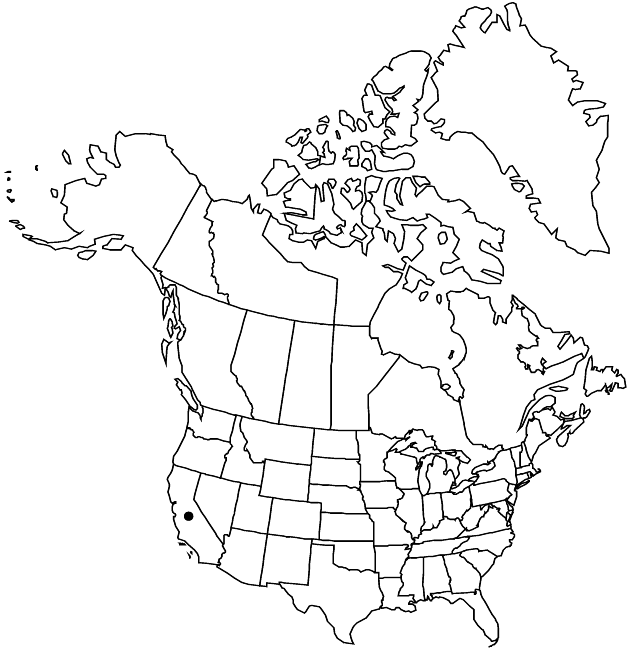familyAsteraceae
genusCentromadia
speciesCentromadia parryi
subspeciesCentromadia parryi subsp. australis
Centromadia parryi subsp. australis
Novon 9: 466. 1999.
Conservation concern
Basionym: Hemizonia parryi subsp. australis D. D. Keck Madroño 3: 15. 1935
Synonyms: Hemizonia australis (D. D. Keck) D. D. Keck
Revision as of 22:40, 29 July 2020 by imported>Volume Importer
Leaves (and peduncular bracts) villous or hirsute to hirtellous, coarsely stipitate-glandular (glands yellow). Involucres 2.5–6 (–7) mm. Paleae sometimes with 2 purple lines (along inner edges of scarious margins). Ray laminae 2–4 mm. Anthers reddish to dark purple. 2n = 22.
Phenology: Flowering Jun–Oct.
Habitat: Inner edges of salt marshes, coastal grasslands, vernal pool edges and beds, openings in coastal scrub, often ± saline or alkaline sites
Elevation: 0–200 m
Distribution

Calif., Mexico (Baja California)
Discussion
Of conservation concern.
Subspecies australis occurs along the southern coast of California. Natural, ± sterile hybrids with Deinandra fasciculata have been documented from Santa Barbara County (B. D. Tanowitz 1977).
Selected References
None.
Lower Taxa
None.
... more about "Centromadia parryi subsp. australis"
introrse +
connate +
herbaceous +
scarious +
absent +
hirsute +
papillate +
continuous +
decurrent +
linear to linear-elliptic +
oblanceolate +
winged;ribbed;winged;ribbed +
1;15 +
stigmatic +
absent +
zygomorphic +
yellow +
monomorphic +
dimorphic +
staminate +
absent +
staminate +
straight +
distinct +
proximal +
1;5 +
bisexual +
dispersed +
yellow +
singly +
Inner edges of salt marshes, coastal grasslands, vernal pool edges and beds, openings in coastal scrub, often ± saline or alkaline sites +
discoid +
singly +
indeterminate +
surrounding +
urceolate;obconic +
cauline +
purple +
deltate +
2-carpellate +
inferior +
attached +
anatropous +
persistent +
falling +
absent +
tough +
thick +
absent +
connate +
persistent +
distinct +
falling +
absent +
unequal +
1-2-pinnatifid +
sessile +
Novon +
1999 +
pistillate +
absent +
fertile +
compressed +
paleate +
setulose +
flat;convex +
fibrous +
exalbuminous +
modifed +
Conservation concern +
alternate +
2-branched +
papillate +
absent +
Centromadia parryi subsp. australis +
Centromadia parryi +
subspecies +
cylindric +
equaling +
shorter +
annual +